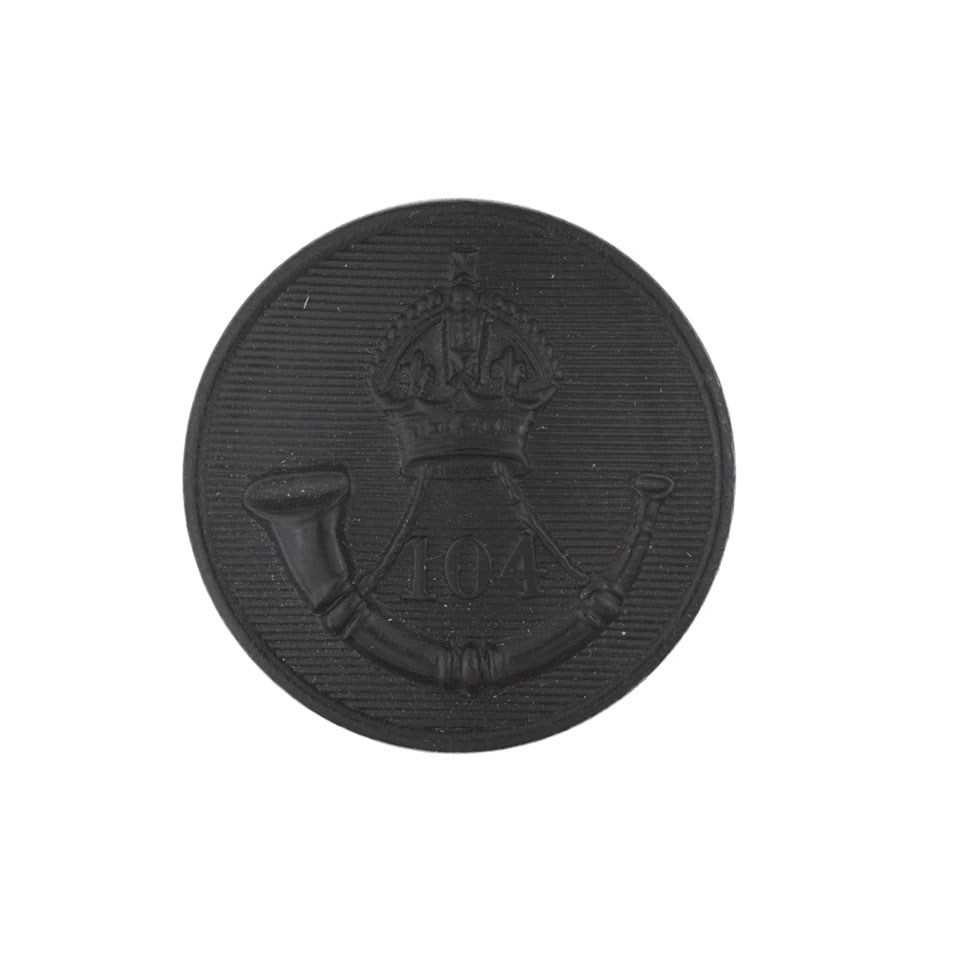
Online Collection
« Prev - 1 of 1 results - Next »
Button, 104th Wellesley's Rifles, 1903-1922
Large, black horn button by Hobson and Son, London, with bugle horn with regimental number, '104', between knotted strings, surmounted by a King's Crown.
The 104th Wellesley's Rifles had its origins in Rajput forces recruited by the East India Company. The unit fought at Seringapatam in 1799 during the 4th Mysore War (1799), participated in the recapture of the island of Reunion (Ile Bourbon) in the Indian Ocean in 1810 and in the Persian Gulf Expedition (Bani Bu Ali expedition) of 1821. The 4th Regiment of Bombay Native Infantry, formed in 1824, served at the Siege of Multan during the 2nd Sikh War (1848-1849), took part in the Persian War (1856-1857) and remained loyal to the British during the Indian Mutiny (1857-1859). It became a rifle regiment in the 1880s. The 4th Regiment of Bombay Native Infantry or Rifle Corps served in the 2nd Afghan War (1878-1880) and in East Africa.
The unit became the 4th Bombay Rifles in 1901. The reorganisation of the Indian Army in 1903 resulted in a change of name to the 104th Wellesley Rifles. The regiment served in Mesopotamia during World War One (1914-1918). Further reform of the Indian Army in 1922 led to the regiment being amalgamated, forming the 1st Battalion, 6th Rajputana Rifles.
From the Field Marshal Sir John Chapple Indian Army Collection.
NAM Accession Number
NAM. 2013-10-20-32-29
Copyright/Ownership
National Army Museum Copyright
Location
National Army Museum, Study collection
Object URL
https://collection.nam.ac.uk/detail.php?acc=2013-10-20-32-29


